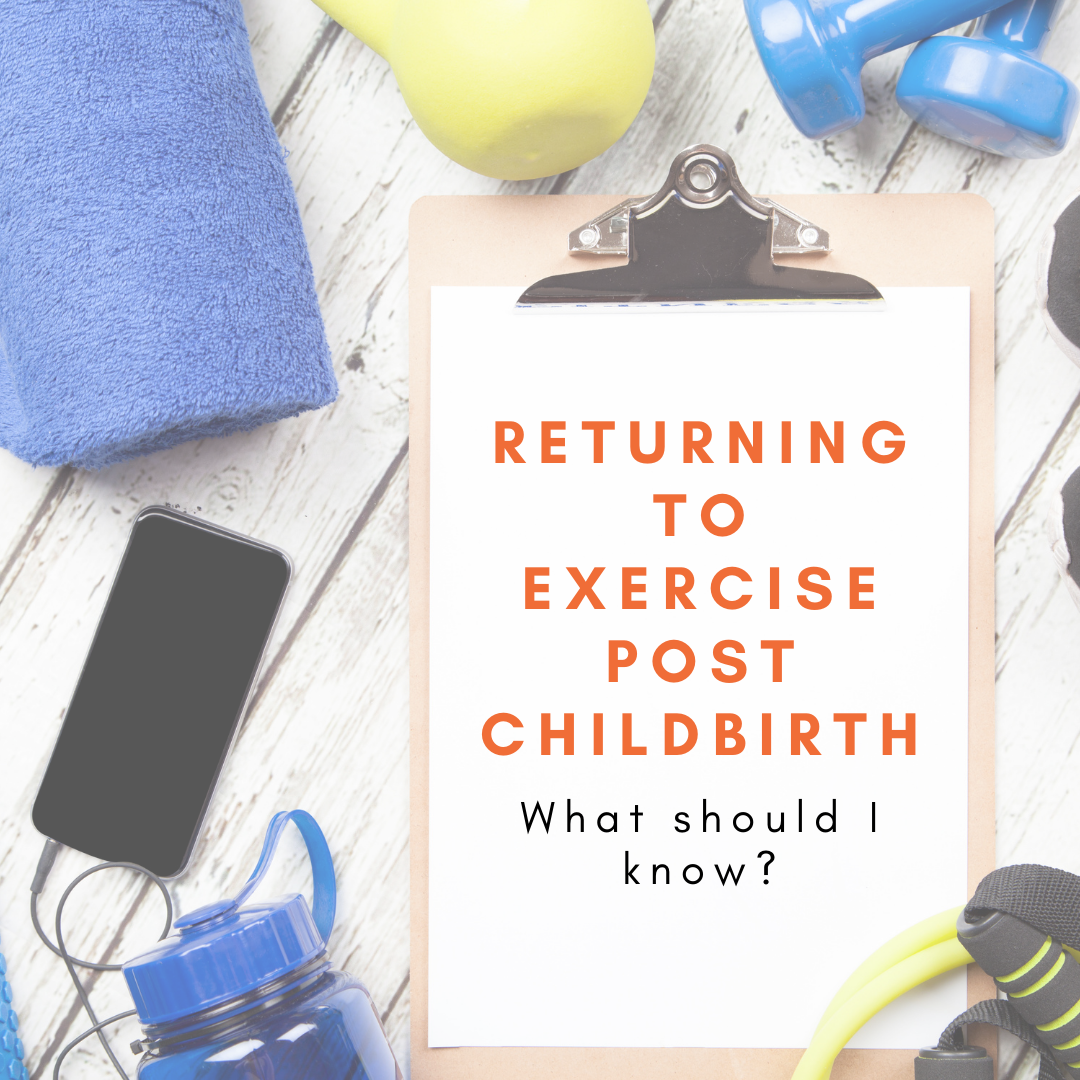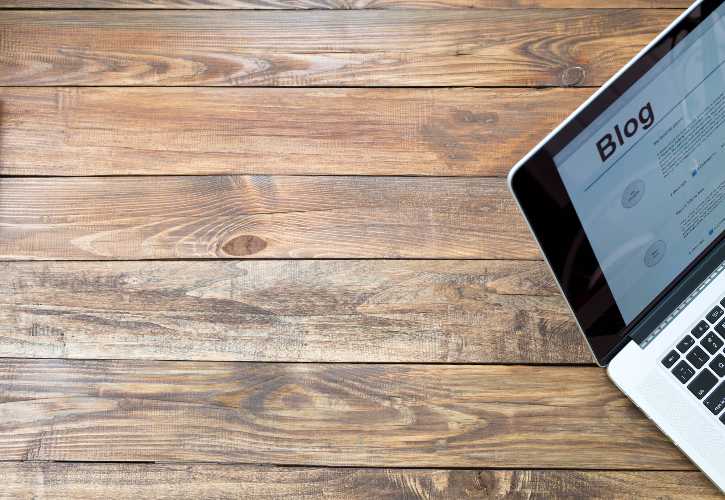
Returning to Exercise Post Childbirth - What should I know?
Editors note: If you are an athlete who is post-partum there is a section further down below that is important for you to read.
Over recent years we have seen an emerging social phenomenon with successful return to sport of many elite athletes. Guidelines and important points for athletes and non-athletes returning to exercise post childbirth are included in this blog.
Ideally seek medical guidance prior to returning to exercise post-partum. If you have had an uncomplicated pregnancy and birth your physiotherapist is one of the best suited professionals to seek advice from at this point.
The general guideline is that healthy women gradually return to physical exercise aiming to accumulate 150 to 300 minutes per week. Low impact endurance training should start gradually but can start early as desired as there is minimal impact on the pelvic floor. Return to high impact exercises and strength training may need to be delayed several months. Some exercises need to be more gradual especially exercises increasing intra-abdominal pressure. The initial focus should be on strengthening pelvic floor muscles.
Important points to be aware of for athletes and non-athletes:
- The pelvic floor is weak and injured in most women postpartum and will require rehabilitation to return to its "normal" functions. Those who struggle to perform the above exercise guidelines and those that have not completed pelvic floor muscle training prior to the birth may need an individualised and supervised programme to regain appropriate strength and control.
- Any physiological changes that occur during pregnancy and persist for four to six weeks post birth, such as elevated hormone levels, may mean your joints are more mobile than normal so take care with activities that require large amounts of movement, flexibility and dynamic exercises.
- Certain birth types may lead to complications. For example, C sections are more likely to cause abdominal pain postpartum. Â Pain management and wound healing are therefore important prior to any return to exercise.
- Low back pain is common so must be considered prior to return to exercise. An assessment of this with a specific treatment and rehabilitation programme may be required.
- Stretched, weakened or separated abdominal muscles (Diastasis recti abdominis) may also delay or impede exercise ability.
- Increase energy and fluid intake if breastfeeding when returning to exercise. Ensure particularly when breastfeeding that nutrition demands of both lactation and training are met. The caloric cost of breastfeeding is estimated to be around 600 kilocalories per day.
- Adequate intake of calcium and vitamin D during breastfeeding is essential.
- Ensure adequate hydration throughout the day.
- Consider psychological readiness to return to exercise as this is important post childbirth. Fear of movement is common particularly post C section and has been associated with restricted postpartum physical activity.
- Exercising after breastfeeding will likely be more comfortable to avoid engorged breasts.
- Take care with those exercises that cause high gravitational load on the pelvic floor or high impact activities in early stages.
- Complicated births such as a forceps delivery or levator ani avulsions are likely to slow down return to exercise post-partum and potentially lead to elevated complication rates of pelvic floor dysfunction and pelvic organ prolapse if time is not given to heal appropriately and rehab is not completed.
- Ensure that return to exercise is gradually increased.
- Consider the importance of individualized breast support support rather than compression is important from a comfort perspective.
- If an obvious Diastasis Rectus Abdominis (gap in between abdominal muscles) see a physiotherapist for an assessment to have a programme prescribed at the correct level and to ensure safe return to exercise without complications
- Sexual dysfunction is common postpartum. Those suffering may benefit from pelvic floor rehabilitation to improve this.
Stress incontinence (involuntary emission of urine when pressure within the abdomen increases suddenly, as in coughing, running or jumping) is one common post-partum complication. Pelvic floor rehabilitation post childbirth can be used successfully in resolving this issue in a large percentage of the population. If you or anyone you know is suffering from any stress incontinence, please contact the clinic and book in for a pelvic health assessment as this is often an extremely limiting condition that can be resolved relatively easily.
- Factors that may predispose you to post-partum stress incontinence are:
- Giving birth,
- Increasing age,
- Vaginal delivery,
- Pregnancy stress incontinence,
- Running related pre pregnancy incontinence,
- Partaking in high impact activities,
- Women with multiple children, and/or
- Return to high impact activities before the body has healed i.e., running.
Exercise guidelines:
- Research highlights that all post-natal mothers, regardless of delivery mode, should be offered pelvic health assessment from six weeks post-natal to comprehensively assess the abdominal wall and pelvic floor. In NZ this is uncommon and requires the mother to generally access private health providers for this. There is currently a movement for this to change so all mothers in NZ can access private pelvic health physiotherapy assessment and rehabilitation in the future which we believe is essential to the long term health and wellness of mothers in NZ.
- High impact activities, such as running, are associated with a sudden rise in intra-abdominal pressure and load the pelvic floor as a result. For this reason, it is advised that you return to low impact activities post-partum prior to a return to running.
- Low impact exercise can be implemented within the first three months post-natal followed by a return to run between three to six months.
Key signs or symptoms of pelvic floor and or abdominal wall dysfunction:
- Urinary and or faecal incompetence,
- Urinary or faecal urgency that is difficult to defer,
- Heaviness pressure bulge dragging in the pelvic area,
- Pain with intercourse,
- Obstructive defecation,
- Pendular abdomen, separated abdominal muscles and or decreased abdominal strength and function, and/or
- Musculoskeletal lumbar-pelvic (low back) or pelvic pain.
Risk factors for potential issues returning to running and sport:
- Less than three months post-natal,
- Pre-existing hypermobility conditions i.e., Ehlers-Danlos,
- Breastfeeding,
- Pre-existing pelvic floor dysfunction or lumbar-pelvic dysfunction,
- Psychological issues that may predispose a post-natal mother to an inappropriate intensity or duration of running as a coping strategy,
- Obesity,
- C-section or perineal scarring, and/or
- Relative energy deficiency in sport (RED S).
A referral to a pelvic health physiotherapist is further highlighted if any of the following signs and symptoms are experienced prior to or after attempting returning to run:
- Heaviness or dragging in the pelvic area,
- Leaking urine or inability to control bowel movements,
- Pendular abdomen and or noticeable gap along the line of your abdominal middle,
- Pelvic or lower back pain, and/or
- Ongoing or increased blood loss beyond eight weeks post Natal that is not linked to your monthly cycle.
An inability to exercise may affect both your mental and physical wellbeing. It can be socially isolating not being able to complete exercises as you previously had. Please ensure that you reach out to us for an assessment if this sounds like you.
To book a pelvic floor assessment please call 07 576 1860 or email reception@buretaphysio.co.nz.
Exercise in Athletes Post Partum
Across the board, athletes return to sport sooner than non-athletes with a greater percentage within six weeks post-partum. Research also highlights that a large percentage of those athletes returning to elite sports post childbirth return to the same if not a higher level of performance. If you are intending on returning to competitive sports post pregnancy, ensure you include a multidisciplinary team in your planning.
Be aware that just as if you were returning to running or sport post injury, when you had a significant reduction in your training load, this is a period that exercise must be gradually resumed. Ideally, this would start with pelvic floor rehabilitation, alongside low impact activities, prior to a gradual reduction in high impact activities and those that result in significant increases in intra-abdominal and pelvic pressure such as lifting weights.
Moderate to vigorous physical activity in sport will not negatively affect breastmilk volume, alter the composition of breastmilk or affect infant growth if there is appropriate food and fluid intake.
Note that post-natal women with a history of RED-S (relative energy deficiency in sport) are at increased risk of stress fractures, pelvic dysfunction and fertility issues so must have appropriate multidisciplinary involvement regarding their return to training.
Things to take note of:
- Regaining functional control of the abdominal wall to manage intra-abdominal pressure and load transfer should be achieved prior to return to run or sport, otherwise overload and compensatory strategies may occur.
- Return to running with a diastasis if it is functional i.e. it is present but there are strategies to control intrabdominal pressure and transfer load across the abdominal wall that are adequate.
- Shoe/boot size can alter permanently with pregnancy and footwear previously worn should not be presumed to be the correct fit.
- Sleep deprivation in athletes is associated with increased injury risk. Sleep is key for recovery from both physical and psychological stress and is frequently restricted in the postpartum period. Utilise naps as able to optimise sleep quantity.
- Utilise sleep hygiene guidelines to optimise sleep quality.
- Similar to post injury situations, build training volume prior to increasing training intensity.
- Minimise large and sudden increases in load.
- Take note of key individual signs that need to be monitored during your return to run/sport i.e. heaviness, dragging, incontinence or moderate to severe pain may suggest excessive training distance or intensity.
- Mild musculoskeletal pain 0-3/ 10 which settles quickly after a run with no pain lasting into the next day is often acceptable; as is used in the management of tendinopathy and other conditions.
- If running with a buggy it must be a buggy that is specifically designed for running. Two handed technique where it is possible should be utilised and ideally your baby is greater than six months old as per buggy manufacturers guidelines. Note also that pushing a buggy has an increased energy cost when compared to running independently.
In summary:
Post-natal women will benefit from individualised assessment and guided pelvic floor rehabilitation for the prevention and management of pelvic organ prolapse, the management of urinary incontinence and for improved sexual function post childbirth.
Return to running is not advised prior to three months post-natal or beyond this if any symptoms of pelvic floor dysfunction are identified prior to or after attempting return to running.

My Doctor said I should do Pilates? -Tell me more!
- Improves strength, flexibility, balance and coordination
- Develops strong core
- Reduces tension and stress
- Improves posture
- Increases mental focus and body awareness
- Tones and builds long, lean muscles
- Increases vitality and sense of well-being
- Increases circulation and endurance
- Helps prevent injury, rehabilitate injuries and reduce chronic pain
- Great adjunct to your normal sport and exercise regime.
- All age ranges, although must be able to get on and off the floor without assistance.
- Patients with current or previous lower back, hip or neck pain.
- Patients getting back into exercise.
- Patients who are currently active but wish to address or prevent ‘niggly’’ injuries.
- Patients who wish to improve flexibility caused by poor posture, lack of exercise or degenerative changes.
- Patients who would benefit from relaxation and an improved sense of well-being.

Core Strength and Back Pain

5 gardening tips to prevent injury

Is your posture hurting you?

